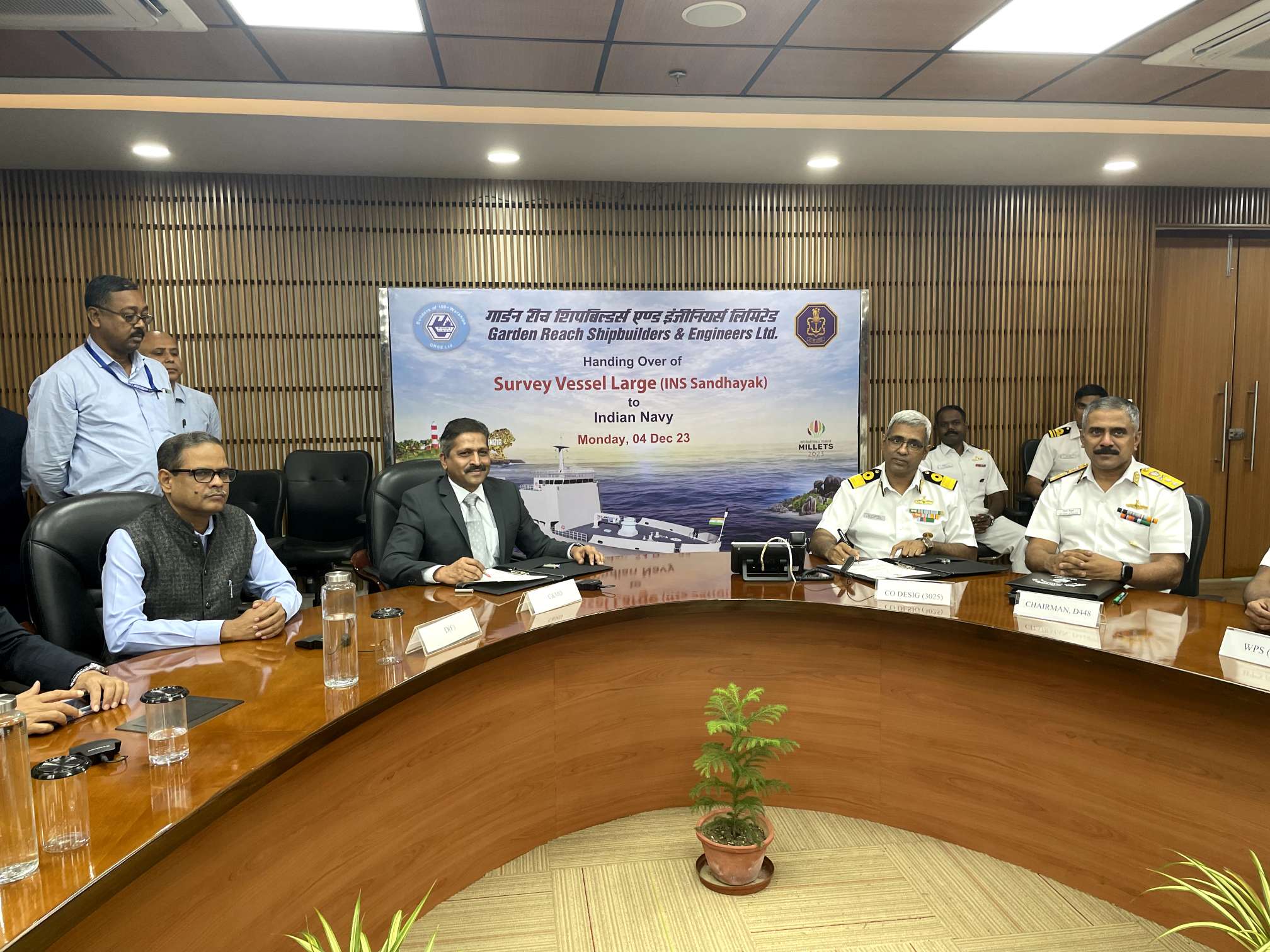Maritime News India : In an era of mounting energy insecurity, climate change, and shifting naval strategies in the Indo-Pacific, India’s ambition to achieve energy independence through green hydrogen must now intersect with a frontier science: quantum technology. At the crossroads of national defense, environmental responsibility, and high technology lies a question few are asking: Can India leverage quantum technologies to sustainably extract solar green hydrogen from seawater—at scale—for its naval operations?
The short answer: Yes—but not alone.
Why Quantum, Why Now?
Traditional methods of hydrogen production—especially from fossil fuels—undermine the very premise of decarbonization. While electrolysis using renewable energy (green hydrogen) is promising, its energy efficiency remains low, and desalination of seawater adds to cost and complexity. Quantum technology could radically transform this.
Recent breakthroughs in quantum photocatalysts, quantum sensors, and quantum simulations of molecular reactions offer pathways to:
- Increase efficiency of water splitting from seawater directly without full desalination
- Lower energy requirements for hydrogen generation
- Enable real-time optimization of solar-hydrogen production processes through quantum-enhanced AI and sensor networks
These advantages are not just technical; they are strategic—especially for the Indian Navy, which operates across vast maritime zones, many of which are under-resourced and logistically isolated.
What India Needs To Do
- National Strategy for Quantum-Hydrogen Synergy
India must evolve its National Green Hydrogen Mission to explicitly include quantum-enabled R&D in its Phase 2 goals. The current focus on electrolysers and manufacturing incentives, while vital, is technologically conventional. - Defense-Linked Hydrogen Infrastructure
Set up dedicated floating or coastal green hydrogen units for the Navy, powered by solar and enhanced by quantum-enabled catalysis. This requires co-location of quantum labs, naval dockyards, and renewable infrastructure—a coordinated but feasible strategy. - Pilot Projects in Island Territories
Deploy small-scale quantum-enhanced solar-hydrogen plants in Lakshadweep, Andaman & Nicobar—geostrategic locations where energy security is critical, and seawater is abundant. - Quantum Startups in Defense Corridors
Incentivize quantum materials and photonics startups under India’s Defense Industrial Corridors (Tamil Nadu, UP) with dual-use application mandates for both civilian and military hydrogen systems.
Collaboration Required
Within Indian Government & Public Institutions
- Ministry of Defence (MoD): Integration of hydrogen-fueled naval vessels and supply chain adaptation.
- Ministry of New and Renewable Energy (MNRE): Policy and subsidy alignment for green hydrogen production from seawater.
- Department of Science & Technology (DST) and MeitY: Invest in quantum labs and applied R&D through QSim (Quantum Simulation Initiative).
- ISRO & DRDO: Sharing of quantum research and composite materials for hydrogen storage and transport.
- NITI Aayog: Strategic planning for quantum-green hydrogen synergies under long-term climate-energy modeling.
With Indian Private Sector & Academia
- Startups & Innovators: Companies like QNu Labs, BosonQ Psi, Log9 Materials can innovate at the intersection of quantum and hydrogen.
- PSUs & Defence Manufacturers: Collaboration with BHEL, Mazagon Dock Shipbuilders, BEL to retrofit hydrogen-ready naval platforms.
- IITs & IISc: Act as R&D hubs for seawater splitting using quantum photocatalysts, possibly under SPV with DRDO and Indian Navy.
With Global Partners
- EU & Japan: Collaborate under Horizon Europe and India-Japan Energy Dialogue for quantum-hydrogen research.
- Australia: Leverage Australia’s leadership in hydrogen innovation and ocean-based renewable platforms.
- U.S. Defense Innovation Unit (DIU): Bilateral engagements on hydrogen as fuel for naval microgrids and drones.
- Private Players: Siemens, Shell, and IBM (which runs a quantum network in India) could play a catalytic role if policy allows joint development.
Why Naval Operations?
India’s Navy is rapidly becoming the frontline of strategic deterrence and blue economy stewardship. A move towards green, autonomous fuel solutions will not only lower operational carbon footprint but ensure energy independence in contested waters—from the Persian Gulf to the South China Sea.
Green hydrogen, unlike lithium-ion batteries or imported LNG, can be produced on-board ships, on base, or on floating solar arrays—making naval operations cleaner, cheaper, and more secure. Quantum tech, still nascent in public discourse, could become the great equalizer in global energy-tech competition.
India’s Opportunity to Lead
India’s tryst with quantum hydrogen is not just a science story—it is a geopolitical imperative. To lead the developing world in quantum-enhanced climate tech, India must build cross-domain coalitions, fund deep-tech R&D, and treat its maritime forces not just as users but pioneers.
The question is no longer if India can do it, but how fast it chooses to move—and who it chooses to bring along.




